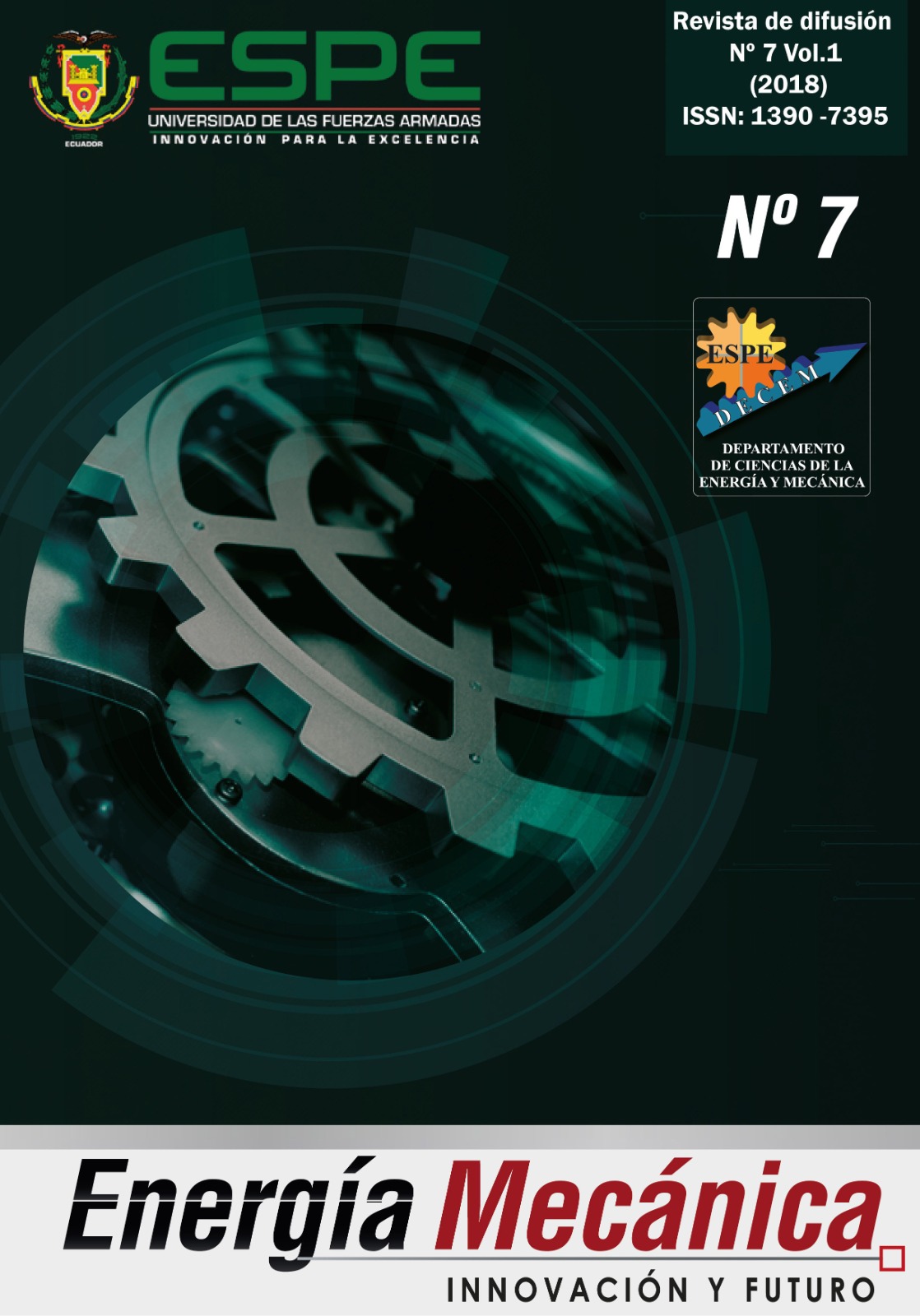DETERMINACIÓN DEL TORQUE Y POTENCIA DEL MOTOR DAEWOO SOHC 1.5 LTUTILIZANDO MATERIALES TERMOPLÁSTICOS EN EL COLECTOR DE ADMISIÓN.
DOI:
https://doi.org/10.24133/EMIF.V7.7i.3924Abstract
RESUMEN
La investigación se basó en determinar el torque y
potencia de un motor Daewoo SOCH 1.5 lt. al cambiar
el múltiple de admisión estándar por otros de material
termoplástico, se realiza la modelación en el Software
CAD e impresión en la impresora 3D del colector de
admisión en tres diferentes materiales termoplásticos
ABS (Acrilonitrilo Butadieno Estireno), PLA (Ácido
Poliláctico) y PET (Polietileno Tereftalato).
Se implementa cada uno de los múltiples y se
realizaron las pruebas de torque, potencia bajo las
mismas condiciones para cada tipo de colector de
admisión, se presentan los diagramas de torque y
potencia, se tabulan los datos obtenidos para generar
un registro de las variaciones de los parámetros
característicos del motor SOHC en función de los
tres diferentes materiales y se determina que material
ayuda a mejorar las características del motor.
Palabras clave:
ABS (acrilonitrilo butadieno estireno), Múltiple de
admisión, PET (polietileno tereftalato), PLA (ácido
poliláctico), Potencia, Torque.
ABSTRACT
The investigation is based on determining the torque
and power of a Daewoo SOCH engine 1.5 lt. When
changing the standard admission manifold for others
of thermoplastic material, the modeling is done in
the CAD Software and printing in the 3D printer of
the intake manifold in three different thermoplastic
materials ABS (Acrylonitrile Butadiene Styrene),
PLA (Polylactic Acid) and PET (Polyethylene
Terephthalate).
Each of the manifolds is implemented and torque,
power under the same conditions for each type of
intake manifold, torque and power diagrams are
presented, data are tabulated for Generate a register
of the variations of the characteristic parameters of
the SOHC engine according to the three different
materials and determines which material helps
to improve the characteristics of the engine, this
research is developed in the Laboratory of Internal
Combustion Engines of the University of The Armed
Forces ESPE Extension Latacunga.
Keywords:
Knock sensor, accelerometer, microphone, transient
events, temporal window, frequency spectrum,
crankshaft and camshaft.
REFERENCIAS
[1]. Pesis, Hernán. (2015). Motos: motores de 2 y 4
tiempos, Fox Andina. (pág. 73). Buenos Aires.
[2]. Heywood, J. (1998). Internal combustion engine
fundamentals, McGraw-Hill. New York.
[3]. Rodríguez, Hermenegildo. Ingemecánica. (30 de
Mayo de 2017). Obtenido de http://ingemecanica.
com/tutorialsemanal/tutorialn63.html
[4]. Mena, Luis. (2011). Compilador de ejercicios de
motores de combustión intera Diesel-Gasolina.
Nueva Aurora. (págs. 48). Ecuador, Quito.
[5]. Sánchez, Mariano. (2012). Mantenimiento
de motores térmicos de dos y cuatro tiempos.
Innova. Málaga.
[6]. Motorroll, Argentina. (18 de Julio de 2015).
Motorroll. Obtenido de http://www.motorroll.
com/
Downloads
Published
Issue
Section
License
Los autores que publican en esta revista están de acuerdo con los siguientes términos:
Los autores conservan los derechos de autor y garantizan a la revista el derecho de ser la primera publicación del trabajo al igual que licenciado bajo una Creative Commons Attribution License que permite a otros compartir el trabajo con un reconocimiento de la autoría del trabajo y la publicación inicial en esta revista.
Los autores pueden establecer por separado acuerdos adicionales para la distribución no exclusiva de la versión de la obra publicada en la revista (por ejemplo, situarlo en un repositorio institucional o publicarlo en un libro), con un reconocimiento de su publicación inicial en esta revista.
Se permite y se anima a los autores a difundir sus trabajos electrónicamente (por ejemplo, en repositorios institucionales o en su propio sitio web) antes y durante el proceso de envío, ya que puede dar lugar a intercambios productivos, así como a una citación más temprana y mayor de los trabajos publicados.

